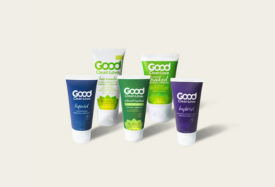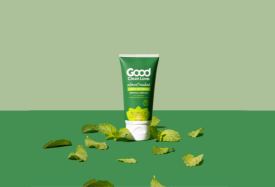UPDATE (1/19): Thanks to a chemist friend who saw our question (How does oil-based lube break down latex condoms?) and read one of the articles linked in the post, we’ve learned a little more about the science of oil-latex interactions.
It seems the recommendation against using oil-based lubricants is based on the fact that it’s known that non-polar solvents degrade latex. The tricky thing is, non-polar doesn’t always mean oil-based. What DOES definitely degrade latex condoms is mineral oil (which is a mixture of various non-polar distillates of petroleum, and not necessarily an “oil” made up of very long fatty acids). On the other hand, Vaseline-based lubricants don’t degrade latex very much, although we might think of them as being “oily.” The chemical reason probably has to do with the chemical forces holding the chains of latex together. Mineral oil and non-polar solvents are able to interact with the latex polymer really well, diminishing the interactions between the individual polymer chains to each other, hence causing a weakening in the material and the break down of latex condoms.
The actual chemical mechanism is still unclear, but it seems to be getting clearer.
Here’s the original post:
That you shouldn’t use an oil (or petroleum-)based lube with a latex condom is common knowledge — everyone just seems to know that if you’re using a condom and need extra glide, you should use a water-based lubricant. It’s easy to Google the research to back this up: studies have shown that mineral oil, a common ingredient in hand lotions, is especially hard on latex — as little as 60 seconds of exposure caused a 90% deterioration in the strength of condoms. Another NIH-supported study found that oil-based lubricants caused enough breakage that “condom users should be told not to use oil-based lubricants.” (Check out this compelling and quick (1 minute) video that demonstrates what these studies found.)
Because everyone just seems to know, we wanted to be able to offer a scientific explanation for something we all take for granted, so we wondered, What exactly is happening, chemically, when oil and latex hang out? When we asked this question, we had no idea how difficult it would be to find an answer. In fact, we found zero credible explanations online. Lots of sites had explanations like this: “When latex comes in contact with anything that is oil-based, a chemical reaction occurs which breaks down and weakens the latex.” OK … but what chemical reaction? Nobody gets into the science of why. We even asked Reddit, a forum of hundreds of thousands of readers, including experts in their fields, and we got … nothing. Nada. Nobody knows.
The closest we found was an educated guess about the molecular structure of latex, and how solvents, like oil, weaken that structure. But that post ends, “Again though, I don’t know for sure, so don’t quote me”.
Although not having a solid answer to our question is frustrating, discovering this data gap behind a common rule of thumb is useful: it reveals how little we actually know about something we thought we knew. Of course, the data about the effect of oil on latex are clear: oil weakens latex, so don’t use it on a condom. (This includes coconut oil — as we wrote in “4 Reasons NOT to Use Coconut Oil as Lube,” there just isn’t enough (or any) data on coconut oil’s effects on latex or on sensitive human tissue to recommend it as a lubricant.) We know that the break down of latex condoms occurs when latex, weakened by oil, develops holes and eventually bursts, but the cause of this effect is still lacking a clear, science-based explanation.














